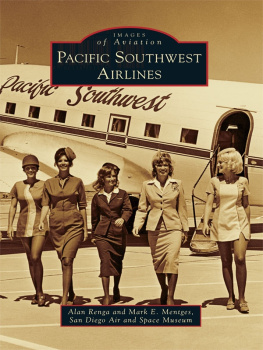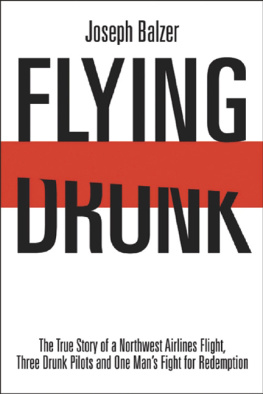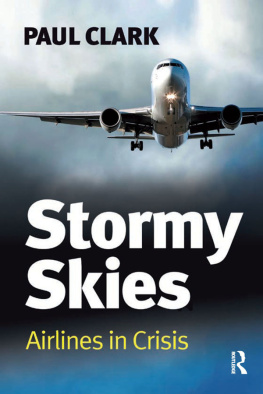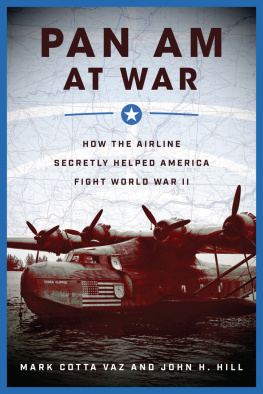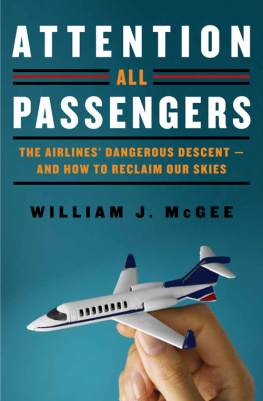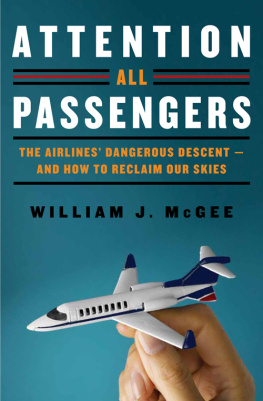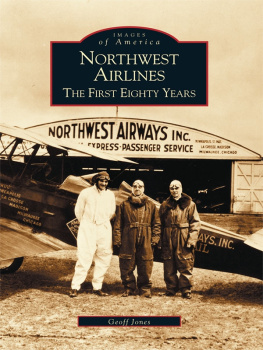TWELVE
YEARS of
TURBULENCE
TWELVE
YEARS of
TURBULENCE
The Inside Story of
American Airlines Battle for Survival
GARY KENNEDY
with
Terry Maxon
FOREWORD BY ROGER STAUBACH
A SAVIO REPUBLIC BOOK
An Imprint of Post Hill Press
TWELVE YEARS OF TURBULENCE
The Inside Story of American Airlines Battle for Survival
2018 by Gary Kennedy and Terry Maxon
All Rights Reserved
ISBN: 978-1-68261-488-4
ISBN (eBook): 978-1-68261-489-1
Cover Design by Tricia Principe, principedesign.com
Interior Design and Composition by Greg Johnson/Textbook Perfect
No part of this book may be reproduced, stored in a retrieval system,
or transmitted by any means without the written permission of the
author and publisher.

posthillpress.com
New York Nashville
Published in the United States of America
To my father, who proved that hard work, a sense of humor,
and a good day fishing are the marks of a life well-lived.
GARY KENNEDY
To my wife, Jannett, and children, Lindsey and Stephen,
who endured too many days and years wondering when
I was going to finish my story and come home.
TERRY MAXON
CONTENTS
FOREWORD
By Roger Staubach
I n late 2000, my friend Charlie Pistor, a member of the American Airlines board of directors, called and asked if I would consider joining the board. Charlie explained that he was retiring from the board and thought I would be an excellent replacement. I told Charlie that I was interested, but would have to give it some thought.
At the time, I was chairman and CEO of The Staubach Company, a commercial real estate business I cofounded in 1977. The Staubach Company was growing rapidly in Texas and expanding into a number of major metropolitan areas across the country. Even though I was incredibly busy, this was a great opportunity with a company that Ive always admired.
Over the years, I watched American Airlines grow into the worlds largest airline and contribute immensely to the economic success of North Texas. As a graduate of the Naval Academy and former member of the armed services, I have a particular admiration for the pilots of American because so many of them also started their careers in the military. Even more impressive was the fact that American Airlines had almost one hundred thousand employees worldwide and was one of the largest employers in North Texas. The idea of working with the men and women of American Airlinespilots, flight attendants, mechanics, ground personnel, and othersmade me proud.
Even more compelling was the fact that my wife, Marianne, and I were longtime residents of North Texas. We moved to Dallas in 1969 when I joined the Dallas Cowboys, and weve never lived anywhere else. Ive been married for over fifty years and learned early on that it works out best if I consult with Marianne before taking on a new business opportunity. As we talked about the prospect of joining the American board, we agreed that it sounded too good to pass up. Several days later, I had lunch with Don Carty, who was then CEO of American. By the time we finished lunch, I told Don that I would be honored to become a member of the board.
I officially joined the board of directors of American Airlines and its parent, AMR Corporation, in July 2001. I was eager to contribute to the success of the company.
After completing my professional football career, Ive followed the same routine almost every morning. When I wake up, I turn on the TV as I run on the treadmill or lift weights before heading into the office. On the morning of September 11, 2001, (just two months after joining the American board), I was in the middle of a workout when I heard the news anchor announce that a plane had crashed into the World Trade Center in New York City. Like the rest of the world, I had no idea of the profound events that were unfolding.
When I arrived at the office, I learned that an emergency meeting of the American board had been scheduled for later that morning. Along with my fellow board members, I listened as CEO Don Carty and chief operating officer Gerard Arpey outlined what they knew about the terrorist strike and what it meant for the future of the airline. I found it difficult to accept that thousands of people had been killed, that two of our aircraft had been destroyed, as well as two United Airlines jets, and that the nations entire air traffic system had been shut down.
The years that followed 9/11 were difficult for American Airlines. In addition to the tremendous human toll, the company lost billions of dollars and the future looked bleak. Ive faced plenty of hardship and difficult challenges during my career, both in the business world and in the world of sports, but those seemed inconsequential compared to the events of 9/11 and what lie ahead for American Airlines.
By March 2003, the companys lawyers were preparing to file for bankruptcy. Just two months earlier, the board approved the appointment of Gary Kennedy as the companys new general counsel. His appointment didnt come as a surprise to me. I had worked with him on several real estate deals that The Staubach Company negotiated for American when he was vice president of Americans real estate and construction department. I thought he was the perfect guy to lead the airlines legal affairs, particularly during those difficult days.
I came to rely heavily on Garys advice and judgment during the many years he served as the companys chief lawyer. Despite the departure of two CEOs, several CFOs, and other senior executives, I was glad that Gary remained a steady presence on the executive team.
As I settled into my role as a board member, I was struck by the sheer volume of difficult issues facing the company. At times, it was overwhelming. The company was under constant attack from competitors, it faced skyrocketing fuel prices and complex labor issues, and its balance sheet was in dire need of repair. For years, the company teetered on the brink of bankruptcy. The boards primary focus was saving American Airlines and returning it to health and prosperity.
But it wasnt easy, and, as board members, we often disagreed about the best way to proceed. Likewise, we didnt always see eye-to-eye with our employees. As we faced one crisis after another, our relationship with labor was tested time and again. Despite the difficulties, I have nothing but the greatest respect for the employees of American Airlines and their dedication to the success of the company. During my days with the Dallas Cowboys, coach Tom Landry was fond of saying, A true test of character isnt how you are on your best days, but how you act on your worst days. Many of the days during my tenure on the board were clearly some of the worst for American.
As a board member, I felt a deep sense of responsibility to the employees of American and to the North Texas community. Maybe I had a heightened concern for these folks because Dallas is my home; maybe it was because many of these people were my friends and neighbors. As I watched the company struggle, I was keenly aware that livelihoods and families hung in the balance. There were times we were unsure what course to take or if our plans for recovery had any chance of success. Things got so desperate that it felt like we needed to throw a Hail Mary pass in order for American to survive.
The story that unfolds in the pages of this book chronicles the extraordinary events that took place at American Airlines during the years between 2001 and 2013. These are the same years that I served as a director of this great company. Twelve Years of Turbulence is a remarkable story. Through it all, I was proud to stand with the extraordinary professionals at American Airlines. Their resilience and strength of character was a true test of the American spirit.
Next page

